Maria Edgeworth was a pioneer, as an educator, as a novelist and as a woman. In conjunction with her father, step-mothers and family she worked tirelessly on the family estate, she wrote frequently to family and colleagues, she prompted the education of women and wrote books, plays and poems that influenced many key writers of the 18th and 19th Century. She was a welcoming hostess to scientists, educators, authors, travelling from Britain and the Continent and they, in turn, welcomed her visits. Even in her later years she sought to alleviate the suffering endured by the Irish during the Great Famine.
The aim of the Edgeworth Society and the Maria Edgeworth Centre, through the displays and artefacts, audio tours and walking tour is to position Edgeworthstown, home of Maria Edgeworth- one of the 18th and 19th centuries most celebrated novelists, progressive thinker and a pioneer in the field of education, as a key tourist attraction within Ireland’s Hidden Heartlands.
Here some of our committee members and some leading Edgeworth scholars give their reasons why this lady and her family are of such interest.
The People of Edgeworthstown are proud of their rich cultural and literary heritage through its connection with the Edgeworth family. The most famous of all the Edgeworths in the literary field is undoubtedly Maria, who with Goldsmith and Colum, ranks as one of the three most internationally famous Longford authors.
In 1996 a group of people came together and founded The Maria Edgeworth Literary Festival. Annually the Literary Festival presents a full and varied programme to tempt all tastes with poetry, short story workshops, music, lectures, drama, comedy and craic attracting very prestigious national and international writers and acclaimed academics to our town.
The Maria Edgeworth Literary Festival has now established itself as one of the major events on Ireland’s Literary Festival calendar.


As a person that possess a great sense of place I felt it was important to get to know Maria Edgeworth. This search opened up a pandora’s box of literary works, social responsibility and a person of foresight, courage and conviction all of which has enriched my life and I hope the life of others.
I have had a long time interest in the history of our town and parish. Getting involved in the local historical group I learned so much about the origins of the town, the links it has had to historical figures and events and above all learned so much about one key figure….Maria Edgeworth. She is very central to the history of the town, to the history of her family and the deeper you go into learning about this remarkable woman the more amazing it is to consider how little known she is. Academics write volumes about her life and works, she is studied across the globe but so few people in the town or locality know very much about her. Getting involved in the Edgeworth Society it is my hope that she will become better know to the general public.


Maria Edgeworth began her writing career in the period of the Enlightenment, a wide-ranging movement that embraced philosophy, science and political theory. This multifaceted movement was united by the belief that the human capacity for reason offered the basis for the development and improvement of the individual and society. Like many women of her time, including Mary Wollstonecraft, Maria Edgeworth recognised that these principles included women and offered them a way to argue against sexual discrimination, particularly the stereotypes of women as irrational and intellectually limited. One of Edgeworth’s earliest publications, Letters for Literary Ladies (1795) takes on precisely this subject, presenting the emancipation of women as part of a general enlightenment of society based on increased access to education, particularly through the medium of print: ‘It is absolutely out of our power to drive the fair sex back to their former state of darkness: the art of printing has totally changed their situation; their eyes are opened, – the classic page is unrolled, they will read’…
Maria Edgeworth is widely regarded as a pioneer of children’s literature. She was an innovative writer of fiction for children and young people, whose work was enjoyed by generations of juvenile readers, many of whom wrote her fan letters that survive in the archives at the National Library of Ireland. She was also the author of Practical Education (1798), an important manual of early education that advocated an experimental, scientific approach, based on observations and anecdotes drawn from her experience of bringing up real girls and boys. It still sounds fresh and direct today.
Edgeworth’s prolific writing for and about children was grounded in a warm sympathy for young people strengthened by her own turmoil in early childhood. She lost her mother when she was five years old, and her father (a virtual stranger to her) remarried within three months…
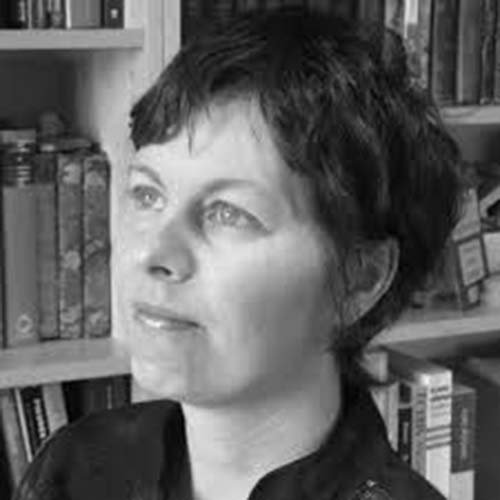
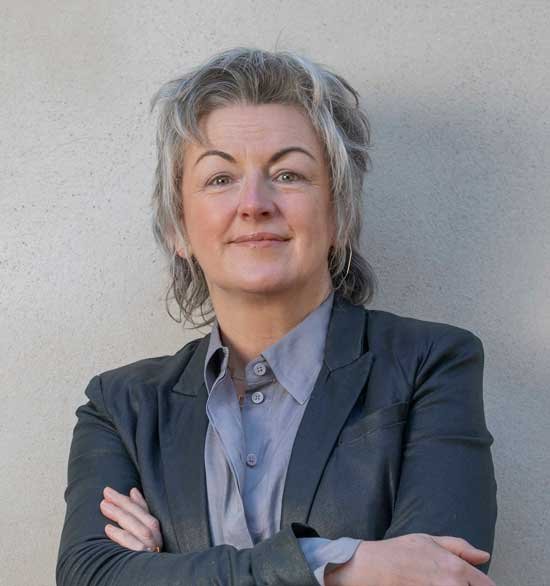
Though born in England and a regular visitor to Britain and the continent, Maria Edgeworth lived out her years in the town that bears her family name. Her biographer, Marilyn Butler, described the Irish tales as ‘grounded in the history and topography of her native Longford’. But the Edgeworths were beneficiaries of the seventeenth-century revolution in land ownership and the family relationship with the place was a colonial one. The author’s ‘new English’ ancestor Francis Edgeworth came to Ireland about 1585 and practiced law in Dublin before being granted over six hundred acres of land in Mostrim in 1619.
The town was renamed for the family, though its older identity survived. In a letter from 1838, the Gaelic scholar and employee of the Ordnance Survey, John O’Donovan recorded a meeting with ‘Miss Edgeworth — the Patroness of Edgeworthstown’, sounding disapproving as he noted that…
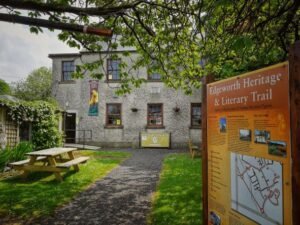

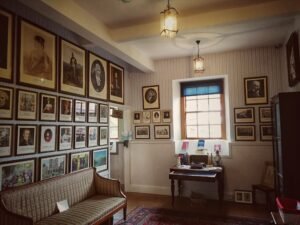
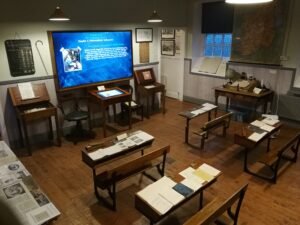

The best way to keep in touch and to be aware of our events
Don’t forget to confirm your subscription in the Email we just sent you!

Please pre-book your visit over Christmas at least 24h in advance via Email or Online booking.
MondayClosed
Tuesday10:00 AM - 5:00 PM
Wednesday10:00 AM - 5:00 PM
Thursday10:00 AM - 5:00 PM
Friday10:00 AM - 5:00 PM
Saturday11:00 AM - 5:00 PM
Sunday11:00 AM - 5:00 PM
Adult €7.50
Children 10 to 16 €3
2 Adults & 2 Children €15
Adult is 16 years+
Family Ticket is 4 family members together
Children under ten are free but must be accompanied by an Adult

The Maria Edgeworth Centre is operated under the direction of the Edgeworthstown District Development Association (EDDA) – a Not for Profit Voluntary Community based registered charity Reg:223373. Registered Charity Number 20101916
© 2023 Maria Edgeworth Centre – All Rights Reserved
On the 17th of August 2024 as part of Heritage Week, with support from the County Heritage Officers, the Heritage Council, Longford County Council Libraries, Archives, Arts and Heritage,
IMMA, OPW and the Computer and Communications Museum Ireland on the NUIG Campus,
Ray Jordan and volunteers from the Maria Edgeworth Centre aim to simulate Edgeworth’s 1803 transmission by telegraph.
Click the link below to learn more or to register to attend either in person or via Zoom.
Join us for this recreation of a key moment in the history of communications

Maria Edgeworth began her writing career in the period of the Enlightenment, a wide-ranging movement that embraced philosophy, science and political theory. This multifaceted movement was united by the belief that the human capacity for reason offered the basis for the development and improvement of the individual and society. Like many women of her time, including Mary Wollstonecraft, Maria Edgeworth recognised that these principles included women and offered them a way to argue against sexual discrimination, particularly the stereotypes of women as irrational and intellectually limited. One of Edgeworth’s earliest publications, Letters for Literary Ladies (1795) takes on precisely this subject, presenting the emancipation of women as part of a general enlightenment of society based on increased access to education, particularly through the medium of print: ‘It is absolutely out of our power to drive the fair sex back to their former state of darkness: the art of printing has totally changed their situation; their eyes are opened, – the classic page is unrolled, they will read’.
As well as reading, women were also writing in increasing numbers, and they were helping to change the face of literature by writing about new subjects and developing new forms. In the eighteenth century the novel was still regarded with a great deal of snobbery. It was seen by many critics simply as trivial escapism, and female characters in particular were often one-dimensional, frequently occupying a ‘damsel in distress’ role in implausible narratives. Edgeworth was inspired by female predecessors including Frances Burney, whose novels instead paid serious attention to the experiences and perspectives of their female characters, and were both psychologically and socially realistic. Edgeworth’s Belinda (1801) is a major contribution to this tradition, offering a fascinating portrayal of its heroine, let loose in London’s cynical ‘marriage market’ and attempting to steer a path in a society in which women’s options were severely limited and there were many traps for the unwary. Her later novels Leonora (1805) and Helen (1832) offer insightful portrayals of areas of female experience that are still marginalised in literature – female friendships, the lives of older women, and the complexities of marital relationships.
Edgeworth also challenged conventional ideas about gender by writing about subjects that were seen at the time as ‘masculine’. Novels such as Ennui, The Absentee, Ormond and Patronage feature central male protagonists who are active in professional life, or whose roles as landowners require them to develop an understanding of economic systems. Her heroes are often guided in their moral and intellectual development by influential women, and they are rewarded by marriage to women who are their intellectual equals, or indeed, superiors. She received both praise and criticism from contemporary reviewers for these aspects of her work – for some, it was a mark of the seriousness of her writing, while for others it became a way to criticise her for stepping into areas that women could not claim to understand. Edgeworth’s determination not to see society in terms of gender division means that for readers today, her novels offer a lively, wide-ranging and socially diverse portrayal of eighteenth and nineteenth-century life.

Maria Edgeworth is widely regarded as a pioneer of children’s literature. She was an innovative writer of fiction for children and young people, whose work was enjoyed by generations of juvenile readers, many of whom wrote her fan letters that survive in the archives at the National Library of Ireland. She was also the author of Practical Education (1798), an important manual of early education that advocated an experimental, scientific approach, based on observations and anecdotes drawn from her experience of bringing up real girls and boys. It still sounds fresh and direct today.
Edgeworth’s prolific writing for and about children was grounded in a warm sympathy for young people strengthened by her own turmoil in early childhood. She lost her mother when she was five years old, and her father (a virtual stranger to her) remarried within three months. Her response was to behave so badly that she was sent away to school at six, and did not return home until she was thirteen, having experienced her stepmother’s loss in addition to her first bereavement. From this point in 1782 until her death in 1849, Edgeworth spent most of her time in Edgeworthstown, where she took a leading role in the education of her younger siblings (there were twenty-one Edgeworth children in all). The only genuine portrait of her, by Adam Buck, shows her sitting amidst her brothers and sisters, answering their questions smilingly as they crowd around her.
Edgeworth began telling stories while still at school in Derby (a particularly vivid one told of ‘an adventurer who had a mask made of the dried skin taken from a dead man’s face, which he put on when he wished to be disguised’); but her earliest published work dates from 1787. Her tales for children began their textual life in oral form, as stories written on a slate, read aloud to her young siblings, and adjusted according to their comments.
The author of five major works for and about children between 1796 and 1804, Edgeworth is known for her realism, her technical virtuosity, her psychological acuteness in depicting the thoughts and feelings of recognizably real children, her secularism, and her commitment to the increased diffusion of knowledge.
Contemporaries recognized the extent to which Edgeworth’s view of education and children’s fiction allied itself with enlightenment and enquiry, and some expressed disquiet at this. For Sarah Trimmer, the secularism of Edgeworth’s The Parent’s Assistant, her first book for children, undermined its usefulness. Many of the stories, Trimmer felt, neglected opportunities to offer religious education to their readers, or to inculcate the obedience and unquestioning attitudes Trimmer thought fit. Edgeworth’s ‘Old Poz’, in which a cantankerous, but good-hearted old magistrate is gently mocked by his daughter, is interpreted by Trimmer as actively subversive, a satire on established state authority.
We can claim Edgeworth as the inventor of what we now call young adult (YA) fiction: in the years when Edgeworth was writing The Parent’s Assistant stories, there were at least two children in the family aged between ten and thirteen, so the idea of writing for older children and adolescents naturally suggested itself. In 1801 she published Moral Tales, a collection of stories for teenagers, often featuring troubled or rebellious teenaged heroes and heroines in search of an authentic individual identity.
Edgeworth’s writing for children and young adults has serious purposes, but it is never unimaginative, and is often infused with humour. But above all, it shows her respect and genuine identification with young people.

Though born in England and a regular visitor to Britain and the continent, Maria Edgeworth lived out her years in the town that bears her family name. Her biographer, Marilyn Butler, described the Irish tales as ‘grounded in the history and topography of her native Longford’. But the Edgeworths were beneficiaries of the seventeenth-century revolution in land ownership and the family relationship with the place was a colonial one. The author’s ‘new English’ ancestor Francis Edgeworth came to Ireland about 1585 and practiced law in Dublin before being granted over six hundred acres of land in Mostrim in 1619.
The town was renamed for the family, though its older identity survived. In a letter from 1838, the Gaelic scholar and employee of the Ordnance Survey, John O’Donovan recorded a meeting with ‘Miss Edgeworth — the Patroness of Edgeworthstown’, sounding disapproving as he noted that
I find no authority for calling this place by the name of Edgeworthstown but one, and this has no weight with me. On Petty’s Map there is neither town nor parish of the name Edgeworthstown, but the Parish and Church of Mastrim are shewn. The People know well that Mastrim is the name of the Parish, and Edziertstown the name of the town. We must adopt Mastrim, unless we wish to be laughed at.
Letters containing Information relative to the Antiquities of the County of Longford, collected during the Ordnance Survey in 1838 (Royal Irish Academy, 1927), p. 30.
Such tensions between Gaelic and colonial forms of land and allegiance were to prove an important influence on Edgeworth’s writing. The Irish novels all reflect upon the spread west of Anglo-Ireland from the Pale. In Ormond (1817), she imagined the Shannon as a kind of cultural frontier and charted the ways in which a colonial society had begun to stretch its thin topography over a densely layered older landscape. The advance of English and an associated rise in literacy in that language, the building of roads and canals and the spread of cattle grazing are all part of what she witnessed and wrote about. In the novels, these developments are never presented as a matter of inevitable adjustment or improvement, but rather imagined alongside poverty, hunger, violence and disease. Themselves part of a changing society, Edgeworth’s Irish novels represent key transitions in pre-Famine Ireland and bear witness to a turbulent, unfolding world.